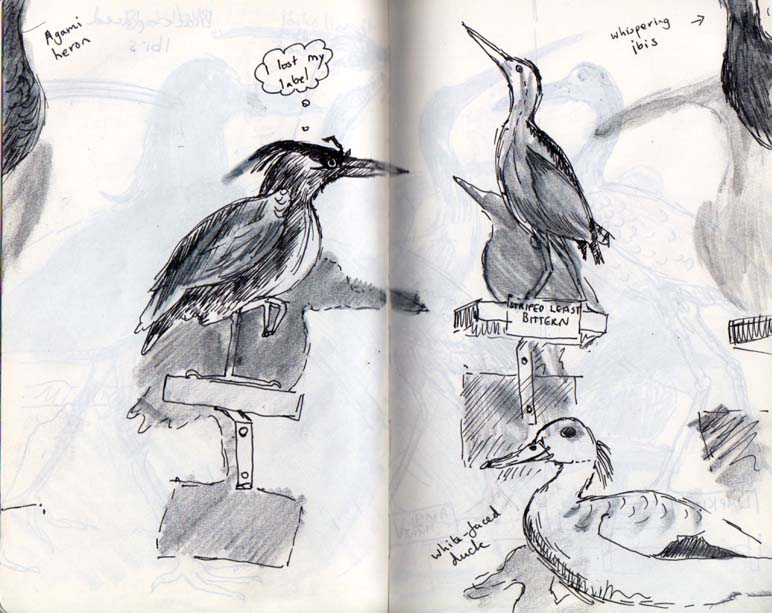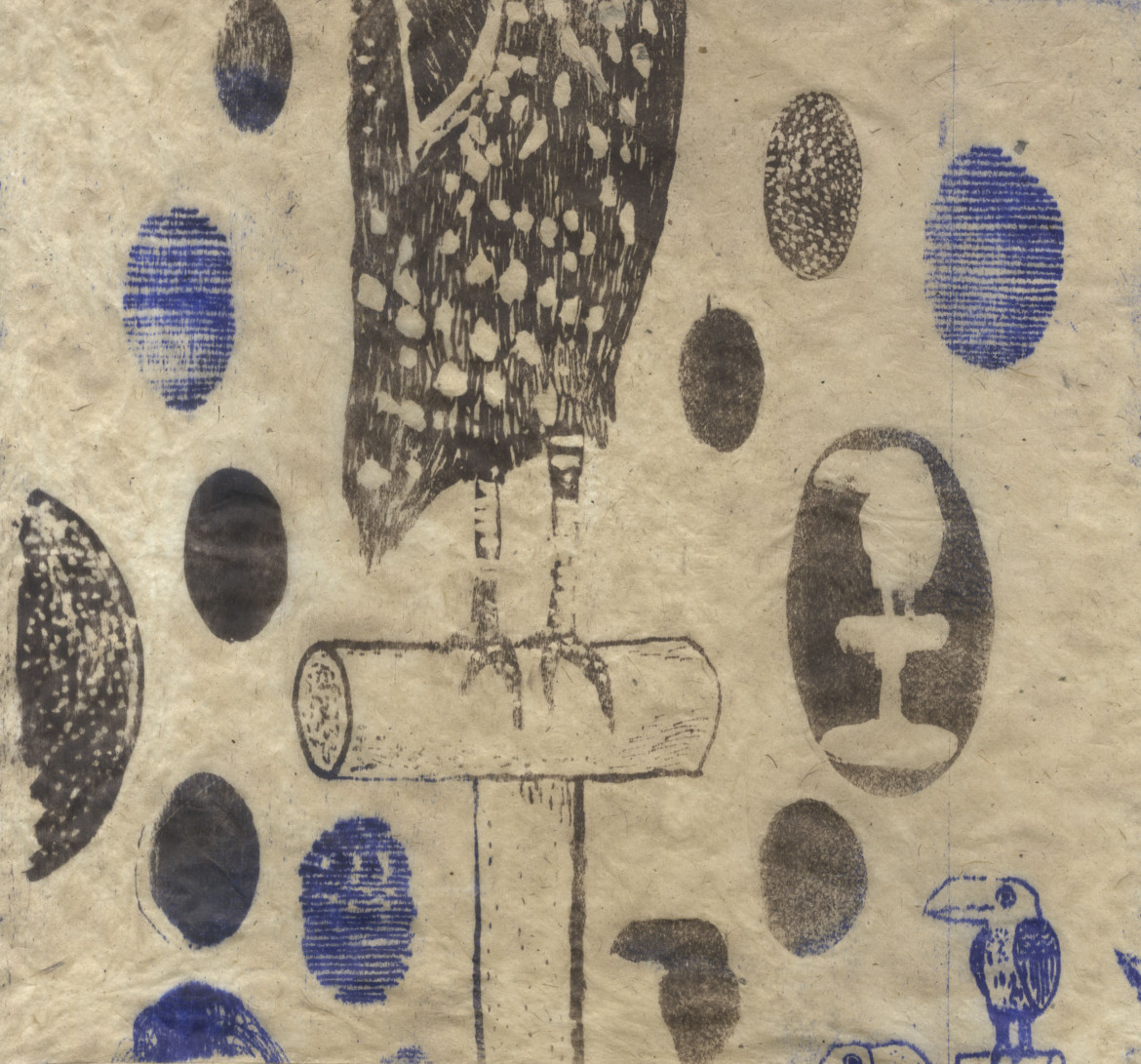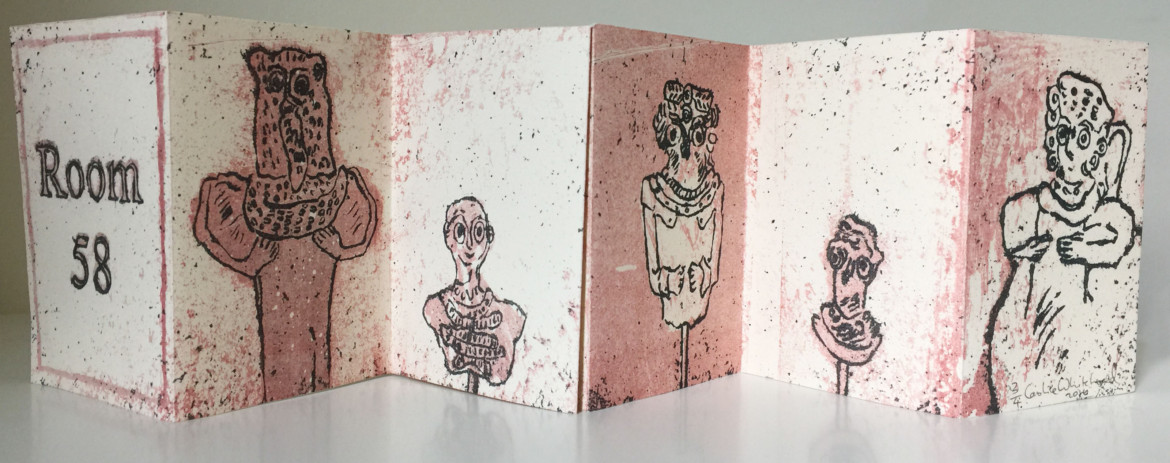Moth-eaten taxidermy and hybrid lithography
After several years working mainly with silkscreen, I have made most of my recent prints either using various forms of alternative lithography – mokulito (lithography on wood); waterless litho; and so-called “kitchen” litho (using aluminium foil and cola) – or etched linoleum. What all these methods have in common is that the results are somewhat unpredictable. In addition (with the exception of etched lino) they are best suited to the production of very small, variable editions.
I love experimenting with different processes and techniques. Recently, for example, I printed an unfinished etched lino block onto kitchen foil, using the resulting image as the basis for a waterless lithograph. Over the next year or so I plan to develop more such hybrid techniques, documenting the processes and results as I go.

When looking for an image on which to base a print, I usually turn to my sketchbooks. I spend hours drawing specimens in natural history museums and am a big fan of traditional displays of taxidermy – preferably moth-eaten and crumbling. As well as the specimens themselves, I am also intrigued by the strange and incongruous juxtapositions created by the reflections that appear in the glass windows of display cases. I want to use hybrid printing techniques to create prints that convey the surreal visual experiences that can occur in these environments. I have also become intrigued by flightless birds and their vulnerability to humans and other predators. This vulnerability is one of the themes of my ‘Flightless’ series of mokulito prints. I like the idea that there is a darker theme lurking beneath the surface of these ostensibly light-hearted images.
I tend to make my printing matrices at home or in my own studio, but do almost all my printing at East London Printmakers, where I have been a keyholder for several years. I’ve always enjoyed working in shared print studios. Very often there is a real sense of shared energy, and of course it’s also invaluable to be able to discuss ideas and technical issues with other artists who have similar interests. I think printmaking cooperatives are great micro-examples of the power of individuals working collectively – a simple example is the opportunity to print on much larger presses than most individual artists could afford or accommodate.
Recently I have used alternative litho techniques to print small editions of two artist’s books. The first was Northern Passage, which was intended to raise awareness of the plight of refugees who had crossed into Europe using the land crossing between Russia and Norway. The second, Room 58, portrays some fascinating objects in an often-overlooked room in the British Museum.
Over the past year or so, I’ve also been involved with traditional lithography through my participation in Ghost[ed.], which is a collaborative stone lithography project devised by Nicole Polonsky and Sue Baker-Kenton. There are eight participating artists, and the eight images in the resulting suite have been created through a kind of chain reaction. My image, which is of a surreal avian grand opera, was created in response to the “ghost” of an image by Nicole. A more complete explanation of the project can be found at http://ghosted.co.uk/

Stone lithograph created in collaboration with Nicole Polonsky (one of a suite of eight lithographs)






